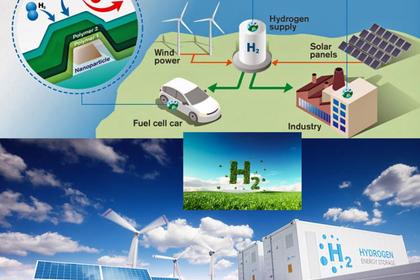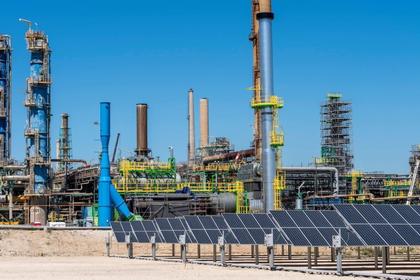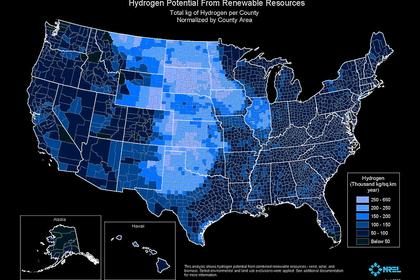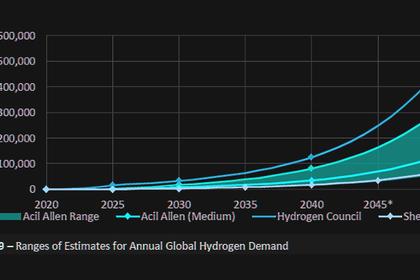
GLOBAL HYDROGEN DEMAND UPDOWN
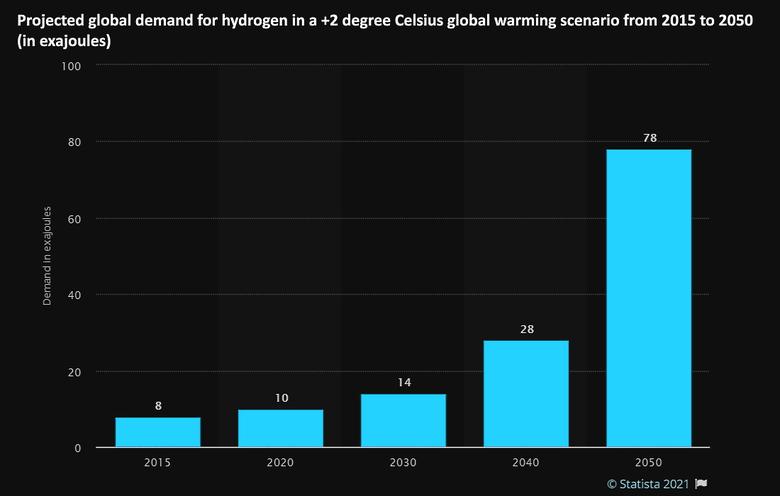
PLATTS - 21 Jan 2021 - Global hydrogen demand declined in 2020 due to the coronavirus pandemic, but is expected to rebound quickly as government support increases and helps to scale up production capacity, analysts said Jan. 21.
"Any ambitious climate target needs a mosaic of solutions and economy-wide decarbonization needs tools that extend past electrification, which is where hydrogen becomes interesting," Zane McDonald, lead energy transition analyst covering hydrogen and alternative transportation for S&P Global Platts Analytics, said during a webinar hosted by the non-profit Energy Innovation Network.
Global hydrogen demand is currently dominated by the refining and ammonia production industries that primarily use natural gas as a feedstock. Hydrogen demand had been steadily creeping toward 80 million tons/year over the past decade before dropping a bit in 2020, according to McDonald's presentation.
Pandemic-related travel restrictions in 2020 cut refinery runs, which cut hydrogen demand, while a decreased need for fertilizer produced from ammonia made with hydrogen also contributed to the demand decline.
However, a full hydrogen market rebound, with a return to increasing annual demand growth is expected in 2022, McDonald said.
Additionally, Platts Analytics expects a near doubling of blue hydrogen capacity by 2025. Blue hydrogen is produced from fossil fuels combined with carbon capture and storage. Most of the world's blue hydrogen production is located in North America where the US is the current leader in commercial CCS projects, according to McDonald's presentation.
Production of green hydrogen, which is produced from zero-carbon feedstock like renewable electricity, has grown rapidly in Europe and the Asia Pacific region largely due to government support, according to Platts Analytics.
Concurrent with rapid releases of national hydrogen strategies, the number of projects has grown, with capacity tripling in last 12 months, McDonald said. He anticipates national strategies coming soon in the UK, Canada and Russia.
Most offtake for renewable hydrogen has been coming from new sectors like mobility and combined heat and power, he said.
Pricing, exports
The relative cost advantage of various hydrogen production technologies is highly correlated with energy prices, capital expenditure and capacity factors, according to the presentation.
Power prices would need to be below $30/MWh before renewable hydrogen "could even begin to be cost competitive with blue hydrogen," according to Platts Analytics' modeling, McDonald said.
This highlights that one of the most important sensitivities for renewable hydrogen production is the cost of feedstock electricity, he said, adding that countries with high renewable hydrogen export ambitions tend to be countries with high renewable resource availability.
For example, Chile recently announced that hydrogen exports could account for 10% of gross domestic product and half of their exports with a strategy targeting 5 GW by 2025 and 25 GW by 2030, McDonald said.
The US Department of Energy's scenarios for lowering the cost of hydrogen from electrolyzers assume a cost of $4.83/kg with an effective electricity cost of 7.4 cents/kWh and $2.31/kg with an electricity cost of 3 cents/kWh, according to a presentation from Marc Melaina, senior analyst with the US DOE Hydrogen and Fuel Cell Technologies Office and Boston Government Services.
Current US hydrogen applications include over 500 MW of backup power, fuel for over 35,000 forklifts, over 14 MW of electrolyzers, over 60 fuel cell buses and over 9,000 fuel cell cars, mostly in California, according to Melaina's presentation.
One of the most promising applications for hydrogen is in reducing the amount of coal needed to produce iron and steel, Melaina said, adding the scale up of electrolysis capacity globally has been "quite impressive."
"We expect countries with strong decarbonization policies to drive hydrogen investment," he said. If policy mechanisms are in place to support the decarbonization of harder sectors like industry, "we could see more green hydrogen use," Melaina added.
McDonald agreed, saying a vast majority of electrolysis projects have government backing.
-----
Earlier:
